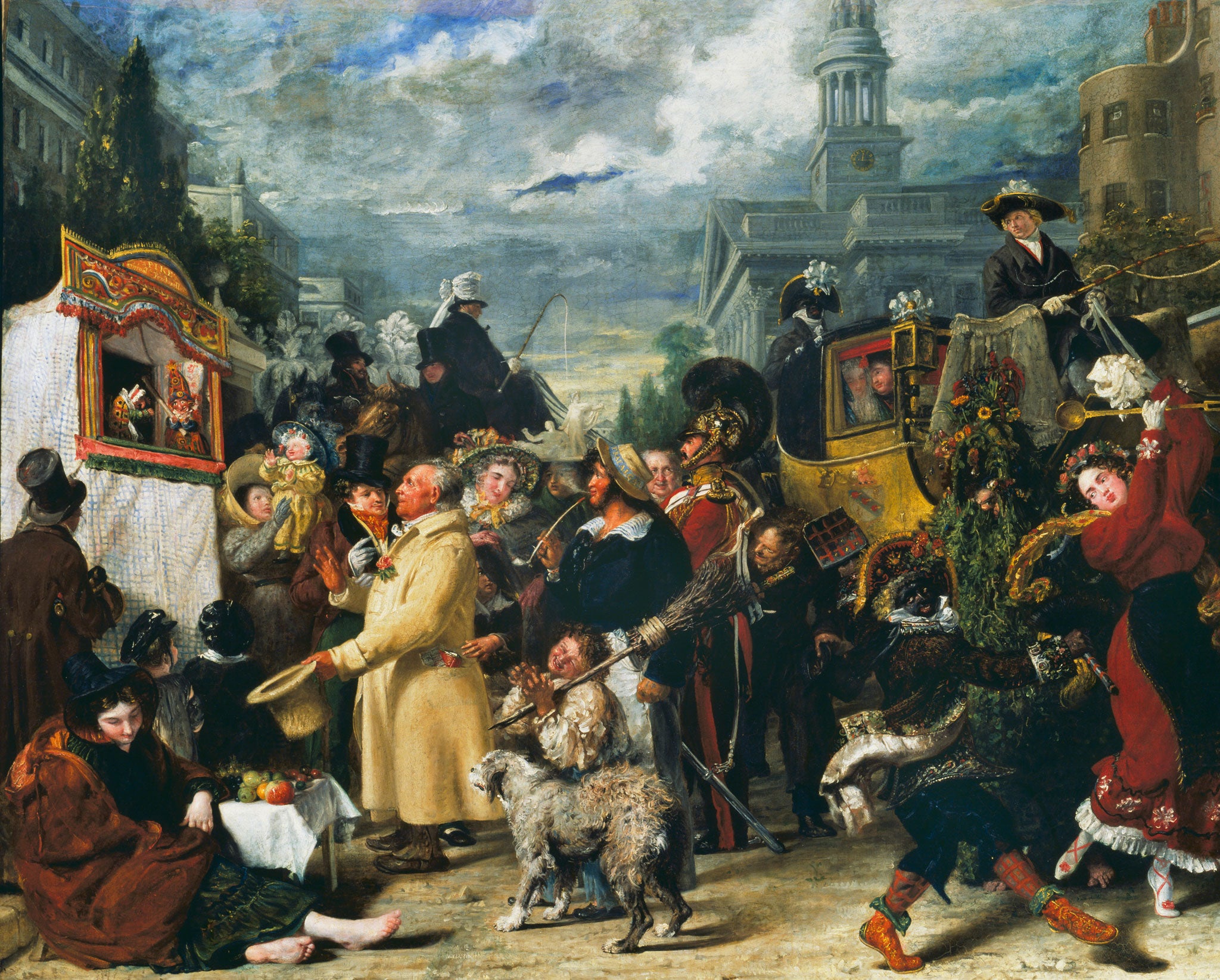Great works: Punch or May Day (1830) By Benjamin Robert Haydon
Tate Britain, London

Your support helps us to tell the story
From reproductive rights to climate change to Big Tech, The Independent is on the ground when the story is developing. Whether it's investigating the financials of Elon Musk's pro-Trump PAC or producing our latest documentary, 'The A Word', which shines a light on the American women fighting for reproductive rights, we know how important it is to parse out the facts from the messaging.
At such a critical moment in US history, we need reporters on the ground. Your donation allows us to keep sending journalists to speak to both sides of the story.
The Independent is trusted by Americans across the entire political spectrum. And unlike many other quality news outlets, we choose not to lock Americans out of our reporting and analysis with paywalls. We believe quality journalism should be available to everyone, paid for by those who can afford it.
Your support makes all the difference.The story is one of tragedy. Or perhaps tragi-comedy. The 19th-century Devonian painter Benjamin Robert Haydon wanted above all things to be remembered for his huge canvases of great and enduring historical, religious or mythological significance. He also wanted to be known as the founder and chief protagonist of a new national school of history painting in order, as he put it, so ringingly, "to raise old England's head to honour and glory, and greatness in art". It did not happen. His life was a catastrophe, which ended in a farcical, near-botched suicide.
In fact, what we can see here today in the freshly re-hung Wolfson Room at Tate Britain is the kind of painting that he truly deserves to be known for but never wished to be. In fact, he would probably have wept to see it here in the midst of this great national collection, displayed so prominently. He would have told us that it was mere burlesque, nothing more than a tawdry potboiler of a piece of work, too big for its physical size, little but a protracted experiment in whimsy, a colourfully confected daub of a thing...
Much too self-flagellatory, Mr Haydon. In fact, this is a marvellously zestful London street-scene, pullulating with stock characters, and all in thrall to the Punch and Judy man at a little past noon (we can read the exact time on the clock of Marylebone church) on May Day. This is painting of the moment and in the moment, hectic-seeming in its execution, a sheer, no-holds-barred romp in oils, wholly other than the canvases over which he laboured, night and day, by the poorest of poor lights, in his London studio. Where are The Death of Eucles, The Judgement of Solomon or Christ's Triumphant Entry into Jerusalem (whose frame alone weighed 600lb) now, those giant conceptions featuring heroic subjects? They are certainly not displayed amongst our national glories. Nor do they deserve to be. But this one does, and it now hangs centre-wall, dwarfing its nearest neighbours, in its slightly over-the-top gilded frame, the upper edge of which somewhat resembles the proscenium arch of a West End theatre.
That is exactly as it should be. This painting is all about theatricality, and it is also entirely appropriate that, directly to its right, there should hang a little-seen, circular portrait of an African-American actor who once played Othello.
This is a tale of chance encounter, seemingly unpremeditated – which was, in fact, not quite the case. Haydon staged this scene with some care. For all that, the message is clear: this is a scene which will not endure. The sheer allure of Mr Punch beating hell out of his missus has dragged all this crowd together, blocking the public highway to such an extent that the marriage coach seems to be in near collision with the horse-drawn hearse, which appears to be veering away from us. Everyone is gawping: the farmer, who is having his pocket picked so deftly by a small hand; the chimney sweep, who is posing like a tragic child actor as his broomstick lolls across his left shoulder.
There are so many faces to attend to here – I can count 24 of them; and such a variety of hats too, from the military to the civil. The sky too appears to be boiling unserenely, displaying a surge of apocalyptic clouds almost worthy of John Martin. There are varieties of walking too, which include the lighter-than-air, prancing strut of the red-bootee-d character in gorgeous blackface who turns his face towards us, at bottom right, for a bit of acknowledgement of his sheer visual extraordinariness. What a cornucopia we have here! And all, alas, gone in a moment. Not so.
About the artist: Benjamin Robert Haydon (1786-1846)
The painter Benjamin Robert Haydon was a friend to great poets who failed to achieve greatness himself. His greatest single work was his Autobiography (published posthumously in 1853), in which he recalled, in vivid and arresting detail, his friendships and conversations with Leigh Hunt, Wordsworth, Lamb, Keats and others. Having lived a hand-to-mouth existence for years, his end was terrible. He shot himself and, failing to die, he had to slit his throat twice to achieve his end.
Join our commenting forum
Join thought-provoking conversations, follow other Independent readers and see their replies
Comments